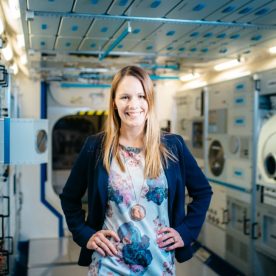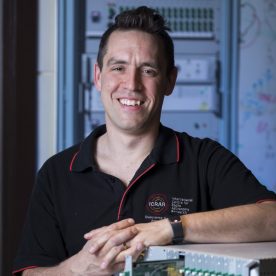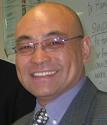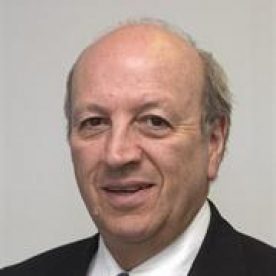WEBINAR
Wednesday 18 August 2021
2.30-3.30pm AWST / 4.00–5.00pm ACST / 4.30 – 5.30pm AEST
Australia has always punched above its weight in science, technology & engineering and our foray into the international space race has been no different. With the creation of the Australian Space Agency in 2018 we have only strengthened our position on the global stage, forging new opportunities and allowing us to work more collaboratively across states, agencies, and research institutes.
We’ve been in the race since the Moon landing, when Canberra’s Honeysuckle Creek Tracking Station transmitted the first images back to earth, and we are creating the future space communications network using lasers. Along the way we’ve supported many individuals to have successful space careers here and abroad.
Join us as we explore Australia’s contribution to the International Space Race, Past, Present & Future.
This is a free National Science week event hosted by the Australian Academy of Technology and Engineering’s WA, SA & NT divisions and is open to all.
SPEAKERS
Katherine Bennell
Dr Sascha Schediwy
HOSTS
Mr Dongke Zhang FTSE, ATSE WA Division Chair
Emeritus Professor Graeme Dandy FTSE, ATSE SA & NT Division Chair
_ _ _ _ _
This webinar was recorded – see below
SPEAKERS

Katherine Bennell
Assistant Manager | Chief Technical Office, Australian Space Agency
As Assistant Manager of the Chief Technical Office of the Australian Space Agency, Katherine leads a team to develop the Australian Space Agency’s first roadmaps, which will guide the advancement of the country’s space capability over the next decade. She is also responsible for the ‘Robotics and automation on Earth and in space’ Strategic Priority Area, the Agency’s manager of the Remote Operations AI and Control Complex, and leads the work to scope the Moon-to-Mars Trailblazer Program mission concept. Katherine holds a BEng Aeronautical (Space) (Hons) and BSc (Adv) Physics from Sydney University, an MSc Space Technology from Lulea Technical University in Sweden, and an MSc Astronautics and Space Engineering from Cranfield University. She has spent most of her career abroad living across 6 countries developing spacecraft, mission architectures and technologies. She has contributed to various European Space Agency missions including: ‘Aeolus’ as a thermal engineer, ‘Lisa Pathfinder’ as thermal architect, ‘Orion-ESM’ as a system architect, ‘MarsHopper’ as the Martian ISRU technology development lead and vehicle system engineer, and e.deorbit as deputy program manager and systems engineering lead. Katherine further developed Airbus’ ‘Commercialisation of humans in space’ strategy, and developed human spaceflight technologies including a prototype Augmented Reality system for astronaut training and procedure guidance. Her most recent project before relocating back to Australia in 2019 was ‘Bartolomeo’, a commercial external facility on the International Space Station, for which she was system engineer, payload mission manager, and then led a transatlantic team as Business Capture and Service Operations Manager.
Talk synopsis
Although Australia has a deep legacy of space activity, the Australia Space Agency is a young agency emerging in a new space era. The purpose of the Agency is to transform and grow a globally respected Australian space industry that lifts the broader economy, inspires and improves the lives of Australians – underpinned by strong international and national engagement. In April 2019, the Advancing Space: Australian Civil Space Strategy 2019-2029 was unveiled, which sets out a 10-year path to guide the growth of the space sector to A$12 billion and increase the number of jobs in the sector to 30,000 by 2030. It identifies 7 National Civil Space Priority Areas that are considered the greatest areas of opportunity for the sector, which would build on Australia’s areas of strength: Communications technologies and services, Robotics and automation on Earth and in space, Earth Observation, Position Navigation and Timing, Access to space, Leapfrog R&D (including Space medicine and life sciences), and SSA and debris removal. For each of these, the Agency is developing, together with the sector, technology roadmaps to 2030. The first of these, Communications Services & Technologies, was released in December 2019. This roadmaps work has been leveraged to identify key areas of interest for Agency programs, such as the Moon-to-Mars initiative. My role at the Agency is leading this roadmaps work. This talk will concentrate on Australia’s capabilities and opportunities in space over the coming decade.

Dr Sascha Schediwy
Leader Astrophotonics Group ICRAR/UWA
Sascha’s research career started with an undergraduate project in planetary science at Curtin University analysing NASA Apollo lunar samples. In 2007, he obtained his PhD from UWA, working on the development of the Advanced LIGO gravitational wave detectors, including a six-month research period at the California Institute of Technology (Caltech).
This was followed by a four-year postdoctoral position at the University of Oxford to work on the development of phased array technologies for the Square Kilometre Array (SKA) telescope. After returning to Australia, Sascha worked on optical fibre frequency metrology, and this included a three-month research visit to Systèmes de Référence Temps-Espace (SYRTE) at Paris Observatory.
In 2014, Sascha started a research group as an independently funded researcher at the UWA node of the International Centre for Radio Astronomy Research (ICRAR), where he leads an international team on the development and construction of the SKA telescope’s phase synchronisation system.
Since 2018, he has translated the technologies that he developed for the SKA telescope and combining them with adaptive optics techniques used in cutting-edge optical telescopes, to become a world-leader in the pioneering field of free-space optical frequency transfer.
In 2021, Sascha was named the Australian Space Awards “Academic of the Year” and the winner of the overall “Excellence Award” across all individual award categories.
_ _ _ _ _
Building a global network of ultra-stable laser links between ground and space
Abstract: Laser links are humanity’s most precise measurement tool, with laser frequency being the physical quantity that can be measured with the greatest precision and accuracy. However, due to the Earth’s turbulent atmosphere, laser links can only be established reliably in vacuum or through a fixed solid medium such as optical fibre. This is because atmospheric turbulence randomly varies the time-of-flight and pointing-angle of a transmitted laser beam hundreds of times per second, thereby rendering the laser link unusable.
My research group at the University of Western Australia has developed and demonstrated a technology that supresses the effects of Earth’s turbulent atmosphere. This technology combines “adaptive optics”, used in the world’s most advanced optical telescopes, with the “phase-synchronisation” system that I developed for the Square Kilometre Array radio telescope. This novel technology will lay the groundwork for a global network of ultra-stable laser links between ground and space.
Such a global laser network can help address some of the most pressing unanswered questions in physics; deliver a hundred times more precise global position, navigation, and timing system; and form the backbone of a secure space-to-ground communication system operating at data rates thousands of times greater than is currently possible.
Talk synopsis
Building a global network of ultra-stable laser links between ground and space
Laser links are humanity’s most precise measurement tool, with laser frequency being the physical quantity that can be measured with the greatest precision and accuracy. However, due to the Earth’s turbulent atmosphere, laser links can only be established reliably in vacuum or through a fixed solid medium such as optical fibre. This is because atmospheric turbulence randomly varies the time-of-flight and pointing-angle of a transmitted laser beam hundreds of times per second, thereby rendering the laser link unusable.
My research group at the University of Western Australia has developed and demonstrated a technology that supresses the effects of Earth’s turbulent atmosphere. This technology combines “adaptive optics”, used in the world’s most advanced optical telescopes, with the “phase-synchronisation” system that I developed for the Square Kilometre Array radio telescope. This novel technology will lay the groundwork for a global network of ultra-stable laser links between ground and space.
Such a global laser network can help address some of the most pressing unanswered questions in physics; deliver a hundred times more precise global position, navigation, and timing system; and form the backbone of a secure space-to-ground communication system operating at data rates thousands of times greater than is currently possible.
HOSTS

Mr Dongke Zhang FTSE
ATSE WA Division Chair
Dongke Zhang FTSE is the Foundation Professor of Chemical Engineering and Director of Centre for Energy at The University of Western Australia. Previously he worked at Curtin University (1999 – 2008) as Professor of Chemical Engineering and Director of Centre for Fuels and Energy. His research interest is in combustion science and technology, fire and explosion, biofuels and bioenergy, waste to energy, hydrogen energy and hydrogen carriers, and their applications.
One of the top 100 most influential engineers in Australia, Dongke Zhang believes that the true value of academic research is best measured by its practical use. Knowledge belongs to the society and technology belongs to the industry. He works closely with the industry to rapidly disseminate his knowledge to the society and industry.

Emeritus Prof. Graeme Dandy FTSE
ATSE SA & NT Division Chair
Graeme Dandy is Emeritus Professor in Civil and Environmental Engineering at the University of Adelaide. Previously he worked for 35 years at the University and was appointed to the position of Professor of Civil and Environmental Engineering in 2000. His research interests include the application of artificial intelligence and optimisation techniques to the management of water resources and environmental systems as well as stormwater harvesting and water reuse. He has co-authored two books and has more than 150 refereed publications in these fields. Prof. Dandy is a Fellow of the Academy of Technology and Engineering and a Fellow of Engineers Australia. He was a co-founder and former director of Optimatics Pty Ltd, a software and consulting company specialising in the optimisation of water supply and wastewater infrastructure (now owned by Suez).
Recording of the webinar
1 hour 3 minutes